Prime Minister Pham Minh Chinh announced on July 11 that the Vietnamese and
US negotiating teams had fundamentally agreed on a joint Vietnam-US statement outlining
a framework for reciprocal, fair, and balanced trade. This framework is expected
to lay the foundation for fostering stable and sustainable bilateral economic and
trade development, serving the interests of both countries’ citizens and businesses.
This marks a positive sign that could help bring more stability to Vietnam’s
trade with one of its largest trade partners. Representatives from Vietnam’s trade
office and business community attending the “Trade Promotion to the US Market” seminar,
held by the Vietnam Trade Promotion Agency at the Ministry of Industry and Trade
(MoIT) on July 16, noted that while the environment is becoming more stable, Vietnamese
exporters still face significant challenges and have yet to fully tap into the immense
potential of the world’s largest consumer market.
Challenges in market access
Mr. Marc Mealy, Executive Vice President and Chief Policy Officer of the US
- ASEAN Business Council, said the US is the world’s largest importer of goods made
outside its borders, purchasing approximately $4 trillion worth each year. These
include capital goods such as machinery and equipment as well as consumer goods
like food, pharmaceuticals, clothing, appliances, and vehicles.
The broad and diverse American consumer culture makes the US a highly attractive
yet extremely competitive market, posing major challenges for Vietnamese exporters.
Furthermore, the US Government’s move to impose tariffs to promote domestic production
and consumption adds another layer of difficulty for Vietnamese exporters.
Mr. Do Ngoc Hung, Vietnamese Trade Counselor in the US, said Vietnam is regarded
as a dynamic, rapidly-growing economy that is increasingly integrating into the
global trade network. Amid the ongoing shift in global supply chains, Vietnam has
secured an important position, becoming a key supplier of goods to many countries
around the world, including the US. “Exports to the US currently account for 30-32
per cent of Vietnam’s total annual export turnover, making it the country’s largest
export market,” Mr. Hung said.
Leading retailers, including JCPenney, Target, and Walmart, have also expressed
a willingness to participate in events organized by the MoIT to seek Vietnamese
suppliers.
Despite strong interest from many retailers, Ms. Nguyen Thi Hong Van, a representative
from the Vietnam Trade Promotion Office in New York, noted that when approached
by American importers, some Vietnamese businesses have failed to meet the quality
and volume standards required.
She explained that Vietnamese agricultural products, especially fresh produce,
face challenges in the US market due to high costs stemming from long shipping times,
which affect product quality compared to similar goods from countries closer to
the US, such as Peru or Mexico. Additionally, Vietnamese goods often lack attractive
packaging and strong brand recognition, putting them at a disadvantage against more
competitive rivals.
Beware of unexpected costs
Beyond technical barriers and market entry requirements, the geographical distance
between Vietnam and the US makes logistics a significant cost burden that hinders
Vietnamese goods from gaining a stronger foothold in the American market.
Speaking at an earlier conference discussing logistical challenges in exporting
to the US, Mr. Huynh Quoc Dinh, Director of Super Cargo Service, noted that although
Vietnam’s Cai Mep - Thi Vai Port in Ho Chi Minh City is fully equipped for direct
exports to both coasts of the US, the country’s logistics costs remain significantly
higher than those of regional peers. According to the Vietnam Logistics Business
Association (VLA), Vietnam’s logistics costs currently equal 16.8-17 per cent of
GDP.
Mr. Dinh outlined four main factors driving Vietnam’s high logistics costs
when exporting to the US. First is ocean
freight. Shipping costs from Vietnam to the US vary seasonally and
are highly sensitive to external factors such as geopolitical risks and supply chain
shifts. “After President Trump announced a 46 per cent tariff on Vietnamese goods
this past April, shipping rates to the East Coast nearly tripled from $1,800 to
$5,000 per container,” Mr. Dinh noted. “As a result, logistics costs don’t just
hover around 16.8 per cent, they can surge dramatically at times.”
Second is warehousing. As US import
tariffs have risen to at least 10 per cent, even with trade agreements in place,
many US businesses have been stockpiling goods in recent months, leading to warehouse
shortages and soaring storage costs in key logistics hubs such as Los Angeles, New
York, Savannah, and Houston.
Third is customs procedures. While Vietnam
has streamlined export procedures to minimize costs, US customs processes are more
complex and risk-prone. “In recent months, US customs authorities have increased
inspections to prevent trade fraud,” he explained. “In the past, only 5 per cent
of shipments were subject to manual inspection; that figure has now risen to as
high as 30 per cent at some ports.”
And fourth is hidden costs. Small and
medium-sized enterprises (SMEs) without dedicated supply chains must be especially
wary of these. Mr. Dinh cited fees during any detention period as an example. In
Vietnam, they cost around $15 per day, while in the US they can exceed $100 per
day and usually last ten days. If customs clearance issues arise, detention can
last much longer, with Vietnamese firms bearing the full cost.
Even after clearing customs, businesses often face losses from damaged goods
during inspections. Up to 30-40 per cent of goods in each shipment may be destroyed.
In such cases, total losses in logistics and compliance costs may exceed the value
of the shipment invoice itself.
Finding a path
To address these challenges, Mr. Mealy proposed several strategies. One is
to develop and market products that meet essential needs and will continue to be
purchased even with higher tariffs. Another is to focus on niche or specialty markets,
such as certified organic foods, which command premium prices. He also encouraged
Vietnamese firms to follow the example of seafood exporters who participate in the
annual Seafood Expo North America, and to attend more US-based trade shows and industry
events to build business relationships.
Companies should also focus on three decisive factors: product quality based
on international standards, price competitiveness, and reliable delivery capacity.
This will require companies to implement modern methods and technologies to optimize
their production processes and meet the strict standards set by US importers and
government agencies.
Vietnamese exporters also possess a unique competitive advantage compared to
other countries in the region: their strong connections to the Vietnamese-American
community in states like Texas, California, Washington, and Virginia, which are
home to millions of overseas Vietnamese. These networks can act as a bridge to build
partnerships and navigate the US market.
Mr. Dinh advised businesses to thoroughly research warehousing options, maintain
constant communications with shipping and storage partners, and, especially for
SMEs or those new to the US market, collaborate with reputable consulting firms
to navigate legal procedures, avoid regulatory pitfalls, and find the most cost-effective
path and opportunities for export success.
For exporters looking to manage their own shipments to the US, Mr. Dinh recommended
that they carefully prepare all required documentation in accordance with regulations,
particularly the certificate of origin, and ensure accurate declaration of export
product codes. This helps reduce inspection time and minimizes the risk of triggering
investigations that could result in penalties reaching hundreds of thousands of
dollars.
Mr. Hung added that Vietnamese businesses must also proactively coordinate
with business associations and the MoIT to stay informed, comply with US regulations
and legislation, and seek support in addressing trade defense lawsuits initiated
by the US.




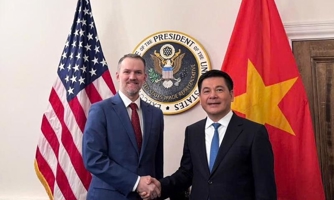
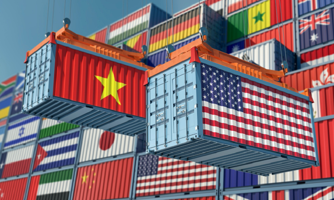

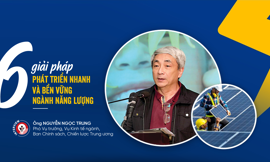

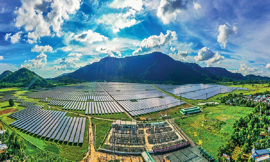

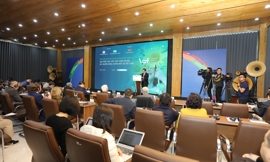
![[Interactive]: Toàn cảnh kinh tế Việt Nam tháng 8/2025](https://premedia.vneconomy.vn/files/uploads/2025/09/06/313418e027db4b97adaba4c542e2f904-10696.png?w=700&h=420&mode=crop)

